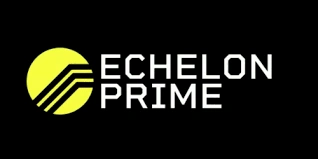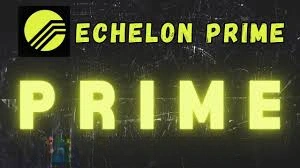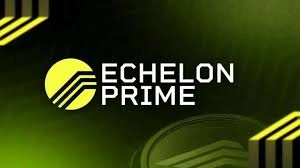Echelon Prime (PRIME): Powering Web3 Gaming & Token Utility
Table of Contents

Gaming is evolving — and so is the economy behind it. The Echelon Prime ecosystem (PRIME) is bridging blockchain tech with play-to-earn models, enabling gamers and developers alike to benefit from tokenized rewards, governance rights, and asset ownership. With features like token-gated experiences, NFT-backed items, and community-driven governance, Echelon Prime aims to transform how we play, earn, and build in Web3. Whether you’re a gamer looking for next-level rewards, a developer seeking a Web3 gaming stack, or an investor tracking token utility growth, this article unpacks what makes PRIME unique: its ecosystem strategy, functionalities, utility case-studies, and key risks you should know. Let’s dive into the future of the Web3 gaming economy.
For more insights and updates on the latest trends in cryptocurrency, be sure to check out our Nifty Finances platform, which serves as your gateway to smarter financial decisions in the digital economy.

What is Echelon Prime? Ecosystem Overview & Mission
Echelon Prime is a pioneering Web3 ecosystem designed to empower game developers and players by integrating blockchain technology into gaming in a meaningful, player-first way. At its core, Echelon Prime aims to create a decentralized foundation for next-generation games — where in-game economies, digital ownership, and governance are not controlled by a single entity but are shared among the community.
The project’s vision is simple yet transformative: to provide the infrastructure and economic layer that allows games to leverage blockchain features without compromising gameplay or user experience. By combining decentralized technologies with gaming innovation, Echelon Prime is building an open, interoperable ecosystem that gives players true digital asset ownership and developers the tools to create sustainable in-game economies.
The Role of the PRIME Token
Central to the Echelon Prime ecosystem is the PRIME token, which serves as both a utility and governance asset. It powers interactions, rewards participation, and aligns incentives across the ecosystem’s stakeholders — players, developers, and creators.
The utility functions of PRIME include:
- In-Game Transactions – PRIME can be used for purchases, staking, and reward mechanisms within Echelon-powered games.
- Governance – Holders of PRIME can vote on proposals affecting the ecosystem’s development, funding allocations, and protocol evolution.
- Ecosystem Incentives – PRIME helps fuel participation through staking programs, liquidity rewards, and community contributions, ensuring that active participants benefit directly from ecosystem growth.
Unlike speculative tokens that serve as mere placeholders for value, PRIME is designed to circulate organically within gameplay and community governance, promoting long-term sustainability rather than short-term speculation.
Key Ecosystem Components
The Echelon Prime ecosystem is composed of three interconnected pillars — games, developer infrastructure, and governance frameworks — all working together to build a thriving Web3 gaming economy.
- Games and Integrations
The flagship title within the ecosystem is Parallel, a sci-fi trading card game (TCG) that brings blockchain ownership and digital assets to life. In Parallel, players can own, trade, and use NFT-based cards that integrate seamlessly with gameplay. This approach demonstrates Echelon’s mission in action — providing blockchain utility that enhances, rather than complicates, the player experience. - Developer Tools and SDKs
Echelon Prime offers a robust developer toolkit that allows studios to integrate blockchain mechanics into their games without having to build infrastructure from scratch. Through APIs, smart contract templates, and secure wallet integrations, developers can quickly implement asset ownership, token economies, and interoperable identity systems. - Governance and Community Framework
Governance within Echelon Prime is designed to be decentralized and transparent, allowing PRIME holders to influence decisions about ecosystem growth, partnerships, and community initiatives. This ensures that the network evolves in a way that aligns with the collective interests of players and developers.
A Unified Vision for Web3 Gaming
By merging advanced blockchain functionality with intuitive design and community ownership, Echelon Prime is redefining what it means to “play-to-own.” The ecosystem encourages fair participation, sustainable economics, and true interoperability across games.
With PRIME as its economic engine and Parallel as its showcase, Echelon Prime is setting the stage for the next evolution of gaming — one where players, creators, and developers share equally in the value they help create.

How Echelon Prime Works: Game Mechanics & Token Utility
Echelon Prime operates at the intersection of gaming and blockchain, offering an ecosystem where in-game actions, rewards, and governance are seamlessly tied to its native token — PRIME. Designed to support fair and sustainable economies, Echelon Prime integrates tokenized incentives directly into gameplay while enabling developers to build richer, player-driven experiences.
At its foundation, the Echelon Prime ecosystem ensures that the value created within games remains within the community — distributed among players, creators, and developers — rather than centralized in corporate servers. Through innovative token design and gameplay integration, Echelon Prime transforms how games reward engagement and participation.
Gaming Mechanics: Earning PRIME Through Play
The PRIME token acts as the core economic and reward layer across all Echelon-integrated games. In flagship titles like Parallel TCG, players can earn PRIME by engaging in various in-game activities that reflect skill, strategy, and participation rather than luck or pay-to-win mechanics.
Players can earn PRIME through:
- Winning competitive matches – Rewards are distributed based on player performance in ranked or tournament play.
- Completing missions or quests – Regular gameplay objectives incentivize consistent engagement.
- Participating in seasonal events – Limited-time events allow players to earn PRIME through unique challenges or collaborations.
- Community contributions – Players who contribute to governance, bug testing, or ecosystem development can receive PRIME incentives.
This model ensures a “play-to-earn” system grounded in real value creation, where users are rewarded for participation and skill rather than speculation.
Token Sinks & Token Flow
To maintain a balanced in-game economy, Echelon Prime integrates token sinks — mechanisms that encourage players to spend or reinvest their PRIME tokens rather than hoard them. This creates continuous circulation and strengthens the overall ecosystem.
Key PRIME use cases include:
- In-Game Purchases – Players can spend PRIME on digital assets such as NFT-based cards, cosmetics, and upgrades.
- Staking and Upgrades – PRIME can be staked or spent to unlock new abilities, features, or premium game modes.
- Governance Participation – Holding and staking PRIME allows players to vote on governance decisions that shape the ecosystem.
- Marketplace Transactions – PRIME functions as a medium of exchange in player-to-player markets, enabling transparent and verifiable asset trading.
By combining earning and spending mechanics, the system creates a circular token economy — one where participation directly fuels both individual rewards and collective ecosystem growth.
Developer Opportunities: Building With PRIME
For developers, Echelon provides a powerful infrastructure to integrate blockchain features without deep technical barriers. Through its SDKs, smart contract templates, and API integrations, game studios can adopt PRIME as a built-in economic layer for their own titles.
Developers can:
- Implement PRIME-based reward systems for gameplay and community engagement.
- Create NFT assets or on-chain economies backed by the PRIME token.
- Participate in the Echelon developer governance process to propose updates or receive ecosystem grants.
By integrating PRIME, developers not only tap into a shared liquidity pool across the Echelon network but also join a growing ecosystem of interoperable games, where assets and rewards can transcend individual titles.
A Sustainable Gaming Economy
Echelon’s architecture is designed to solve the challenges of unsustainable play-to-earn models by aligning incentives for all participants. Players earn value through meaningful engagement, developers gain new monetization channels, and the ecosystem benefits from organic token circulation.
Ultimately, PRIME transforms gameplay into participation, ensuring that every interaction — whether battling in Parallel or building the next Echelon-powered game — contributes to a thriving, decentralized gaming economy.

Tokenomics & Governance of PRIME
The PRIME token lies at the heart of the Echelon ecosystem, serving as both the economic engine and the governance instrument that binds together players, developers, and the community. Its design reflects Echelon’s philosophy of sustainable tokenomics and decentralized decision-making, ensuring that all stakeholders benefit from the ecosystem’s growth while maintaining a balance between utility and governance.
Supply Metrics and Token Allocation
PRIME’s tokenomics have been structured to promote long-term stability and equitable distribution. According to Echelon’s framework, the total supply of PRIME is capped at 111,111,111 tokens, a deliberate choice that emphasizes scarcity and long-term value preservation.
The distribution model ensures that ecosystem growth and community engagement are prioritized over short-term speculation. Tokens are allocated across several key areas:
- Community and Player Rewards: A significant portion is dedicated to incentivizing gameplay, tournament participation, and community activities. This encourages active engagement across Echelon-integrated titles such as Parallel TCG.
- Developer and Ecosystem Grants: Designed to fund innovation, these allocations support new projects building on the Echelon framework, from studios to infrastructure providers.
- Governance and Treasury: A portion of the supply is reserved for the Echelon DAO treasury, ensuring continued funding for ecosystem development and governance initiatives.
- Team and Early Supporters: Allocations for contributors, advisors, and investors are typically subject to vesting schedules, reinforcing long-term commitment to the ecosystem’s vision.
This transparent and purposeful distribution ensures that value circulates among contributors and participants rather than being concentrated in the hands of a few.
Governance Model: Decentralized Decision-Making
Echelon’s governance model is built around decentralized community participation, giving PRIME holders the power to shape the future of the ecosystem. Through the Echelon DAO, token holders can propose, discuss, and vote on decisions that affect game integrations, ecosystem upgrades, token allocation, and policy changes.
Key governance features include:
- Proposal System: Any qualified participant can submit proposals to improve the protocol, introduce new mechanics, or fund initiatives that align with Echelon’s mission.
- Voting Rights: PRIME holders exercise influence proportional to their stake, ensuring that governance power reflects active ecosystem participation.
- Community Treasury Management: The DAO oversees the allocation of treasury funds for development, partnerships, and community programs.
This governance model not only empowers players and developers but also embeds true decentralization into the Echelon ecosystem — where innovation, transparency, and accountability guide progress.
Utility Beyond Gameplay
While gameplay remains a key component of PRIME’s functionality, the token’s utility extends well beyond the in-game economy. Within the broader Echelon network, PRIME unlocks multiple forms of participation and value generation:
- Access & Staking: Players and developers can stake PRIME for early access to features, tournaments, or governance privileges.
- Ecosystem Rewards: Long-term holders may benefit from reward programs tied to participation, liquidity, or contribution to governance.
- Cross-Game Utility: PRIME operates as a shared economic layer across all Echelon-integrated titles, enabling seamless interaction between different games and applications.
- Incentivized Governance: Active participants in governance proposals and votes may earn rewards, aligning economic incentives with decision-making engagement.
Building a Sustainable Digital Economy
By combining clear tokenomics, utility-rich design, and community-driven governance, PRIME achieves a rare balance in the Web3 gaming landscape — one that empowers rather than exploits. Its design ensures that all stakeholders, from casual gamers to developers and investors, contribute to and benefit from a shared ecosystem.
In essence, PRIME is more than a game token — it’s the foundation of a decentralized gaming economy where value creation, ownership, and governance belong to the players and builders who make it all possible.
Ecosystem Adoption & Real-World Examples
Echelon Prime’s ecosystem showcases how blockchain technology can seamlessly integrate with gaming to create dynamic, player-driven economies. At the center of this ecosystem is Parallel TCG, the flagship game that exemplifies how the PRIME token powers real-world gameplay, digital ownership, and community governance.
Parallel TCG: The Flagship of Echelon’s Ecosystem
Parallel TCG is a next-generation trading card game built around blockchain technology and digital ownership. Players collect, trade, and battle using NFT-based cards, each with unique attributes and scarcity. What sets Parallel apart from traditional digital card games is its integration of the PRIME token, which underpins both the game economy and player incentives.
Players can earn PRIME through gameplay achievements such as tournament wins, missions, or completing in-game objectives. These tokens can then be used for:
- Purchasing in-game assets like cards, upgrades, or cosmetics.
- Participating in governance, influencing the direction of the Echelon ecosystem.
- Engaging in DeFi-like features, such as staking or accessing exclusive NFT drops.
Parallel demonstrates how blockchain enhances user agency — allowing players to truly own their assets and participate in an evolving game economy that rewards engagement.
Ecosystem Growth & Partnerships
Echelon Prime’s success extends beyond a single title. The protocol is designed as an open framework that empowers other studios to build blockchain-enabled games using its technology stack and the PRIME token.
Through its developer grants, SDKs, and community tools, Echelon provides the infrastructure for creators to integrate game economies that are interoperable within the PRIME ecosystem. This approach fosters collaboration and shared value across multiple titles, much like how ecosystems such as Ethereum support diverse decentralized applications.
Key elements driving ecosystem expansion include:
- Developer grants to onboard new studios experimenting with blockchain gaming.
- Collaborations with NFT marketplaces enable smooth trading of in-game assets.
- Community programs that reward early adopters and active contributors to the Echelon DAO.
By combining open development resources with real incentives, Echelon positions itself as a foundational layer for next-generation Web3 gaming.
User Interaction: Play, Earn, and Collect
From the user’s perspective, Echelon Prime offers multiple ways to engage with the ecosystem:
- Gamers can play titles like Parallel TCG, earn PRIME, and use tokens for in-game activities.
- Collectors can trade NFT assets tied to game economies, benefiting from transparency and verifiable scarcity.
- Community members can stake PRIME to participate in governance or gain early access to partner projects.
This interconnected model blurs the line between gaming, investing, and community building — creating a holistic experience where participation drives tangible value.
Echelon Prime’s growing ecosystem signals a shift in the gaming industry — from closed, developer-controlled economies to open, player-owned networks. By combining blockchain transparency with engaging gameplay, Echelon redefines how digital worlds operate, rewarding players for their time, skill, and contribution to the ecosystem.
Like any emerging blockchain ecosystem, Echelon Prime (PRIME) comes with opportunities—and a fair share of risks that investors, gamers, and developers should carefully consider. Understanding these factors is essential before engaging deeply in the PRIME economy, whether through gameplay, token holding, or governance participation.
Echelon Prime represents a promising intersection between gaming and blockchain, but like all early-stage ecosystems, it carries risk. Evaluating adoption metrics, governance evolution, and market conditions will help participants engage responsibly while positioning themselves for long-term opportunities as the ecosystem matures.
Echelon Prime (PRIME) carves out a compelling niche at the intersection of gaming and blockchain — offering players more than just entertainment, but ownership, rewards, and governance. For developers, it opens doors to build Web3-native economies with the PRIME token as a key lever. But as with any evolving ecosystem, the success hinges on strong game titles, active communities, and meaningful token utility.
If you’re a gamer seeking new ways to earn, a dev eyeing Web3 gaming stacks, or an investor tracking token-value growth, keep an eye on PRIME’s ecosystem traction, token-utility rollout, and game pipeline. Ready to level up? Check out the official platform, test a game, engage with the community, and see how blockchain gaming could shift from niche to mainstream. Check out the Web3 Infinity, DarkStar, and GamerHub for play-to-earn opportunities.